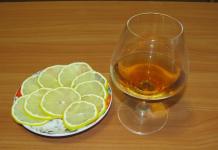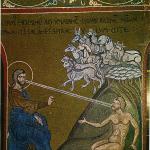For high-quality connection of individual parts of the pipeline, components such as steel barrel. Connecting fittings used in the arrangement of various pipeline systems.
|
Inch |
||
We offer to buy high-quality components inexpensively in Moscow or make them to order steel barrel according to customer sizes.
Detailed description
A barrel (bochata) is a steel tube with threads applied to it at both ends. Double-sided steel element designed for threaded connection various types pipes when laying a pipeline. Products are made from cold-deformed seamless tube.
For installation of gas and other types of pipelines it is used welded steel barrel, which we also make to order in any size. Barrels differ from plumbing fittings in their threads. Metal squeegee has one long thread for the coupling and locknut, while the bochata has two threads of the same length on both sides.
Products are distinguished by length, type and cut of thread, and nominal diameter. Our resources allow us to produce parts of any size.
Application
Barrel for welding and with a threaded connection finds wide application during installation of water and steam heating, hot and cold water supply, internal gas supply, as well as for fire extinguishing systems and other process pipelines.
In a word, it is used where there is a need to firmly secure connected sections of pipelines.
Steel barrel, as a connecting threaded element of a pipeline, functions well under the influence of non-aggressive media such as water, gas, steam and can withstand temperatures up to plus 175 degrees Celsius.
Any sizes to order
Depending on availability, you can always buy a variety of steel barrels. The nomenclature list is very extensive. First of all, available to the consumer sizes 1 inch, 1/2, 3/4. We make all other sizes to order in as soon as possible. Our resources allow us to accept orders for large volumes. If you are interested in retail, we are also happy to offer high-quality components at low prices. Our price will please you, as will the quality of the products we produce.
|
||||||||||||||||||||||||||||
Steel bends
We kindly ask you to clarify the cost of products by phone or in the attached price list file! |
|||||||||||||||||||||||||||||||||||||||||||||||||||||||||||||||
The drive is a detail pipeline fittings(pipe blank). Externally, spurs are similar to other threaded connections, such as a thread or a barrel, however, there are a number of fundamental design differences: at one end, the spurs have a short section of thread, and at the other, a longer one. The long threaded end holds the coupling and locknut, while the short threaded end is used to connect the pipes to the coupling.
Slopes allow you to firmly connect sections of the pipeline when none of them can be rotated. The connection occurs as follows: the end with a short thread of the drive is brought to the edge of the pipe. Then a coupling is screwed onto a short section of thread using sealing material. Sealing material is wound at the end of the coupling. The coupling is rolled onto the pipe, leaving its edge on the thread of the drive, and secured with a lock nut.
IN lately An alternative to driving is often threaded connection"American".
Squeegees are also often used with ball valves. In this case, the drives are attached to one of the ends of the ball valve.
The product catalog of the Santekhros company presents drives made of steel and brass. All products are permanently available in a warehouse in Moscow.
To receive detailed information For any question you are interested in, please contact the manager by phone
Despite the great popularity of modern plastic pipes, steel pipes are still widely used - mainly for the installation of pipelines for hot and cold water supply systems, pipelines for heating systems and gas pipelines. When operating in non-aggressive environments, steel pipelines are characterized by high reliability and durability. The technology for installing steel pipelines requires the use of special elements pipe billet. Their use greatly simplifies installation and reduces installation time.
All necessary elements The Santekhkomplekt company offers its clients in Moscow for assembling steel pipelines.
Types of pipe blanks
Installation of steel pipelines is quite labor-intensive and can require considerable time. The work is significantly speeded up by the use of special elements of the pipe blank, with the help of which threaded connections of pipes are made. Also, the blank elements make it possible to simplify the laying of pipelines if it is necessary to shift the axis.
Main elements of a pipe blank:
- Sgon. It is a small piece of pipe with a thread on one end and a short thread on the other end. It is used to connect fixed sections of pipelines to each other.
- Barrel. Just like a squeegee, this is a small piece of pipe with external threads cut at the ends. The difference from the drive is that the threads at both ends are of equal length.
- Welded thread.It is a short piece of pipe, at one end of which a short thread is cut, and the other end is prepared for welded joint with a pipe. This element is welded to a steel pipe, which makes it possible to thread it to other sections of the pipeline.
- Pipe sections. Prepared sections of a fixed length (usually 1 meter), the ends of which are threaded. Used for quick installation short sections of pipelines, such as branches.
- Staples and indentations. Curvilinear pipe sections with threads cut at the ends. They are used when it is necessary to go around obstacles or when the axes of the pipes being connected do not coincide.
All types of pipe blanks can be made of steel without protective coating. It is also possible to use galvanized steel workpiece elements, which provides increased corrosion resistance.
Pipeline parts, clamps and fasteners from Santekhkomplekt
The Santekhkomplekt company sells all types of pipe blank elements in Moscow. The offered parts are supplied from leading metallurgical enterprises. High-quality steel was used for manufacturing, which fully meets all the requirements of regulatory documentation.
The use of these products can significantly simplify and speed up the installation of metal pipelines. At the same time favorable prices our company is given the opportunity to reduce financial costs for installation.
Fitting fitness discord
If you are just starting to understand the basics of the science called plumbing, then you should start studying with fittings. And even if you are not going to sell fittings wholesale in the future and load flanges in barrels, it is simply necessary to know what types of fittings are used by specialists today.
So, fittings are special parts of a pipeline that are used to connect its parts to each other. At the same time, pipelines can be the most different types, and the connection can perform different functions - branching the pipeline, sealing it, connecting, and so on. For example, fittings can connect pipes of the same diameter to each other. Such fittings are called straight. But those fittings whose task is to fasten the ends of the pipes different diameters, are called transitional. IN classic version fittings are attached to pipes using threads, which can be either internal or external, and threaded fittings are used for this. In general, translated from English word“fitting” translates as connection, installation or assembly.
Fashionable fittings in plastic “dressed”
Modern fittings are made from the most different materials. The fact is that production technologies for the most important elements of plumbing are constantly evolving, and fittings made of cast iron, steel, as well as brass fittings are today being equally replaced by plastic and polypropylene. The process of replacing steel or cast iron fittings with fittings from modern materials occurs due to the widespread transition to modern construction plumbing communications for the use of metal-plastic and polypropylene pipes. These pipes have large number undeniable advantages over materials of previous years. The low weight of metal-plastic and polypropylene ensures ease in every sense of the word - transportation, installation, and pipe fastening. Both polypropylene and metal-plastic pipes are not subject to corrosion and are resistant to temperature changes, which cannot be said about heating systems of past decades. Another advantage of using pipes made from metal-plastic raw materials or polypropylene is their unique sound insulation properties. After all of the above, it becomes clear to a beginner why metal-plastic and polypropylene fittings are replacing threaded ones. It is worth noting that in general fittings for metal-plastic pipes- these are press fittings and compression fittings.
“We work on fittings.” Glossary of terms
Fittings can be transitional, corner, cross, straight. They can be in the form of a coupling, a barrel, a drive, a tee, plugs, and so on.
coupling
A coupling is one of the many types of fittings. The main task of the coupling, the thread of which is on the inside, is to connect sections of pipe, hose or sleeve. Couplings can be simple or transitional. The coupling must be cut onto the pipe using sealants made from such types of raw materials as energyflex, tow, plumbing flax, fum tape, etc. In general, the sealant in the process of using fittings as threaded elements is used everywhere.
Barrel
A barrel or adapter is most often compared to a coupling because it is used for the same purposes as a coupling - to connect different parts of a pipeline. But, if the thread of the coupling, as we have already indicated, is with inside, then the barrel has a thread located on the outside. Bochata - this is also the name of this element - is advisable to use on the final segment of a pipeline branch, for example, in the case of installing a crane.
Sgon
If the keg is similar to the clutch in its functional characteristics, then the drive, in turn, is very reminiscent of a barrel. One way or another, the sgons have their own individual characteristics. Squeegees are used to connect already laid pipes together. The threads on the sides of the drive are not the same - on one side it is longer, on the other it is shorter. This was done so that, in the event of a rupture of the pipeline, all parts of which are rigidly fixed, they could be secured in their places without moving or rotating.
Corner
Angles (corners) are also a kind of coupling, that is, a piece of pipe bent at an angle of 90 °, etc. The angle has threads on both sides, which opens up great possibilities for installing pipe rotation. Angles are used to change the direction of the pipe line. Corners allow you to change the direction of flow by 45-120°. But it is worth noting that changing this direction is possible only in those places that were originally included in the project. Angles allow you to create a large branched piping system. The angle is installed at the end of a straight section of the pipeline, and then a pipe is screwed into it, which begins a new section of the pipeline line. Corners are irreplaceable if the line “winds”, that is, repeatedly changes its direction.
Tee
Tees, bends and manifolds are indispensable in cases where it is necessary to apply repeated branching of the pipeline. Using a tee allows you to start a new pipeline line without interrupting the flow of the main branch.
Stub
A plug is another type of fitting. Plugs are designed to close end holes in pipelines. Depending on the type of fixation, plugs are divided into flanged and wafer, rotary, flat welded, spherical and elliptical. In this list, the “outstanding” ones are flanged steel plugs, which are capable of withstanding the temperature of the working environment from -70 to + 600 C. In general, flanged plugs have unique characteristics in terms of resistance to the influence of an aggressive environment.
This is not a complete list, although sufficient for first acquaintance, of various types of fittings with brief description their functional application. Good luck in learning the basics of plumbing.
When installing pipeline systems of small diameters it is impossible to do without the use of connecting parts pipelines, so-called fittings.
Pipeline connecting parts are parts for connecting pipes of the same or different diameters, both in one direction and at an angle. Depending on the connection method, there are several types of fittings: threaded, self-locking, compression, capillary soldering fittings and press fittings.
Judging by the names of the types of connecting parts of pipelines, it immediately becomes obvious that the main task of the fitting is to connect pipelines at places of turns, branches and transitions. By connecting the sections of the pipeline, fittings thereby provide a reliable, durable and permanent connection.
This article discusses the most common connecting parts of pipelines in operation. Threaded fittings connect various pipeline elements to each other using threads cut into them and the connected parts of the pipeline. Threads can be cut both on the inside of fittings and pipes, and on the outside.
Threaded fittings for water and gas steel pipes are made with cylindrical threads. To create a tight connection, the cylindrical threads are sealed linen strand, moistened with red lead mixed with natural drying oil, non-hardening paste, FUM tape, or a universal sealing thread impregnated with a special sealing compound.
Pipeline connecting parts for metal water and gas pipes are made mainly from malleable iron, steel, bronze and brass. GOST requires that the outer and inner surfaces of the fitting be free of cavities and foreign inclusions, and the end planes of the fittings must be perpendicular to the axes of the passages.
Steel and cast iron connecting parts of pipelines can be coated with some kind of anti-corrosion material. Anti-corrosion coatings- This is mainly chromium, zinc, nickel. Zinc coating is more often used when using fittings in conditions atmospheric influences when it is undesirable for rust to appear on them. Such fittings are commonly called “galvanized”. Chrome and nickel plating is more expensive and is used mainly on fittings for plumbing purposes, i.e. fittings used when installing household plumbing.
To give greater strength, the connecting parts of ductile cast iron pipelines are equipped with a special bead at the edges - a thickening. U steel fittings there are no beads.
Basically, fittings are produced with a nominal diameter (Dy) from 8 to 100 mm. As a rule, such fittings are used for pipelines in which the temperature of the working fluid is not higher than 175 °C and the pressure is not higher than 1.6 MPa, at any value of Dy (for steel fittings) and at Dy not more than 40 mm (for fittings made of ductile cast iron ). The most common fittings are with a nominal diameter (Dy) of 15, 20, 25, 32, 40 and 50 mm.
Depending on the purpose, the connecting parts of pipelines are divided into:
·fittings designed to connect various parts of the pipeline to each other: couplings, bochata;
fittings designed to change the direction of the flow line of the working fluid): squares;
·fittings used for pipeline branching: tees and crosses;
· fittings used to connect firmly fixed sections of the pipeline that cannot be dismantled: sweeps;
·fittings used for hermetically sealing the ends of pipes of any pipeline branch: plugs, plugs.
coupling Designed to connect two pipes together. The simplest is a piece of pipe with a cylindrical thread cut on the inner surface. To connect pipes using a coupling, a thread is cut on the outer surface of the pipes (at the ends to be connected). A coupling is screwed onto the thread of one of the pipes using a sealant. On the other side of the coupling, another pipe with a previously cut thread is screwed in, also using a sealant.
A coupling that has the same diameter on both sides is called a straight coupling.
GOST direct coupling, made of ductile cast iron, is provided in two types: short and long.
Example symbol straight short coupling without coating with DN 40mm:
Short coupling 40 GOST 8954-75
the same with zinc coating:
Short coupling Ts-40 GOST 8954-75.
An example of a symbol for a straight long coupling without coating with DN 40mm:
Long coupling 40 GOST 8955-75
the same with zinc coating:
Long coupling Ts-40 GOST 8955-75
Straight coupling steel GOST 8966-75 is provided in one type.
An example of a symbol for a straight coupling without coating with DN 50mm:
Coupling 50 GOST 8966-75
the same with zinc coating:
Coupling Ts50 GOST 8966-75.
In addition to direct couplings, there are transition couplings. The name itself suggests that such couplings are used to transition from one diameter to another. In this case, on one side the coupling has the diameter of the pipe entering it, and on the other side, the diameter of the exiting pipe, which differs in size from the first.
An example of a symbol for an uncoated transition coupling from DN 32mm to DN 25mm:
Coupling 32Х25 GOST 8957-75
the same with zinc coating
Coupling Ts-32Х25 GOST 8957-75
GOST determines for each type of coupling the nominal diameter, thread parameters, length, weight (for cast iron couplings also the number of ribs on the surface of the coupling).
 Another type of fitting is the so-called barrel. This connecting element is similar to a coupling and is used mainly for the same purposes as a coupling, only its threads are cut on the outer surface, and not on the inside, like a coupling. Those. in the very in simple form it is a piece of steel pipe with threads cut at both ends. Typically, the length of the thread on one end of the keg is equal to the length of the thread on the other end of the keg. Barrels (barrels) are used mainly at the end of one of the pipeline branches, when this branch needs to be completed by installing some kind of unit. An example of using a keg: a water pipe with an outer diameter of 20 mm enters the room. It is necessary to connect a coupling valve DN 15 mm to it. Then most the best option to connect them together can serve next construction: a 20X15 mm adapter coupling is screwed onto a pipe with a diameter of 20 mm. A barrel with DN 15 mm is screwed into the coupling from the DN 15mm side, and a tap is screwed onto this barrel.
Another type of fitting is the so-called barrel. This connecting element is similar to a coupling and is used mainly for the same purposes as a coupling, only its threads are cut on the outer surface, and not on the inside, like a coupling. Those. in the very in simple form it is a piece of steel pipe with threads cut at both ends. Typically, the length of the thread on one end of the keg is equal to the length of the thread on the other end of the keg. Barrels (barrels) are used mainly at the end of one of the pipeline branches, when this branch needs to be completed by installing some kind of unit. An example of using a keg: a water pipe with an outer diameter of 20 mm enters the room. It is necessary to connect a coupling valve DN 15 mm to it. Then most the best option to connect them together can serve next construction: a 20X15 mm adapter coupling is screwed onto a pipe with a diameter of 20 mm. A barrel with DN 15 mm is screwed into the coupling from the DN 15mm side, and a tap is screwed onto this barrel.
as well as couplings can be galvanized.
A similar connecting element in comparison with the barrel is the so-called. A thread differs from a barrel in that this element is threaded only at one end. The end on which there is no thread is welded, for example, into the pipeline, and some pipeline fitting assembly is screwed onto the other end: a drain valve, a valve, etc.
Threads, like barrels and couplings, can be galvanized.
 Sgony- this is the connecting part of the pipeline, one of the types of fittings. Outwardly it looks like a small piece of pipe, with a thread at each end. A characteristic difference between the drive and other similar designs is that the thread is applied not inside the part, but outside. The bends have a short section of thread at one end, and a longer section at the other.
Sgony- this is the connecting part of the pipeline, one of the types of fittings. Outwardly it looks like a small piece of pipe, with a thread at each end. A characteristic difference between the drive and other similar designs is that the thread is applied not inside the part, but outside. The bends have a short section of thread at one end, and a longer section at the other.
The original design allows it to be used where it is necessary to connect firmly fixed sections of the pipeline that cannot be rotated.
An example of using a squeegee is the installation heating radiator and connecting it to the supply hot water pipeline. Since the radiator cannot be screwed onto the supply pipe, it is first necessary to create a certain wiring diagram(structure) for its installation. To do this, you need to decide on the location of the radiator, calculate the length of the supply pipe, and determine the size and diameter of the outlet itself. In addition to the drive for installation, you will need a coupling and a lock nut of the appropriate diameter. After carrying out all the necessary preparatory work installation can begin. Installation is carried out in the following order:
1. The radiator is attached to its permanent location.
2. The supply pipe is cut (if necessary) to the required length.
3. The end of the supply pipe is cut external thread to connect the coupling.
4. A lock nut is screwed onto the section of the drive with a large section of thread (all the way).
5. The coupling is screwed onto the section of the drive with a small section of thread using a sealant (all the way).
6. The bend from the side of the long section of the thread is screwed into the radiator plug using a sealant until the end of the bend with the coupling screwed onto it is equal to the end of the supply pipe.
7. The coupling with the squeegee screwed into it is screwed onto the supply pipe until it stops using a sealant (at the same time, the squeegee is partially unscrewed from the radiator cap).
8. The locknut is screwed in until it stops, preventing self-unscrewing of the drive.
If it is necessary, for example, to connect two rigidly fixed pipes to each other, then in the installation structure it is necessary to use two couplings, and not one, as in the example discussed above. Before starting to connect the pipes, a lock nut is screwed onto the bend from the side of the long thread, then the coupling. From the side of the short thread, the bend is screwed onto the coupling, previously screwed onto the pipe. After this, connect the other end of the drive to another pipe and “drive” the second coupling onto it, and then the lock nut. When using this type of connection, it is also necessary to use sealing elements.
The main dimensions of bends used in domestic industry, with and without zinc coating and cylindrical threads, are regulated by GOST 8969-75. Structural dimensions And technical specifications defined in GOST 8965-75 and 6357-81.
 Square allows you to change the direction of laying pipelines in places provided for by the project.
Square allows you to change the direction of laying pipelines in places provided for by the project.
This is actually a coupling bent at an angle of 900. It is screwed on at the end of a straight section, on the other side of this angle a pipe is screwed into it, which is the beginning of a new section of the line. By analogy with couplings, angles are distinguished between straight and transitional. For rectangles, the nominal passage diameters on both sides are the same. Transition angles have different nominal passage diameters: larger on one side, smaller on the other. Transition elbows allow you to switch from one pipe diameter to another pipe diameter with a change in the direction of the flow line of the working fluid by 900. Elbows used on industrial heating mains and in water supply systems are made mainly of ductile cast iron in accordance with GOST 8946-75 - rectangles and GOST 8947- 75 - transition angles.
Angles are galvanized and non-galvanized. The standard designation of angles resembles the designation of couplings.
If from some point the pipeline begins to branch into several directions, then you cannot do without such type of fittings as a tee or a cross. , without interrupting the main branch of the pipeline, starts a new one. If it is necessary to periodically disconnect a new branch, then immediately after the tee at the beginning of this branch some kind of locking device, for example, a valve. The cross branches in a direct direction into two branches at once, each of which can later branch again with the help of tees and crosses.
Based on the main dimensions determined by GOST, they distinguish:
- straight tee, GOST 8948-75, example 15X15;
— transition tee, GOST 8949-75, example 20Х15;
— tee with two transitions, GOST 8950-75, example 40Х25 Х32;
- straight cross, GOST 8951-75, example 20X20;
— transition cross, GOST 8952-75, example 25Х15;
— cross with two transitions, GOST 8953-75, example 32Х25 Х25;
An example of a symbol for an uncoated transition tee from DN 40 mm to DN 32 mm:
Tee 40Х32 GOST 8949-75.
An example of a symbol for a cross with two transitions with zinc coating from DN 25 mm to DN 15 mm and DN 20 mm:
Cross 25Х15Х20 GOST 8953-75.
Plugs or plugs are used to temporarily close a branch of a pipeline, for example during repairs, or to permanently close it.
High quality and reliability pipeline connecting parts is based on strict implementation and compliance with all requirements of a cyclic complex sequence when installing pipeline connections. Using various fittings, it is possible to avoid lengthy and expensive work associated with the need to connect pipelines by welding and, without much effort and expense, both temporary and material, solve the installation and operation of water supply and heating systems.


















